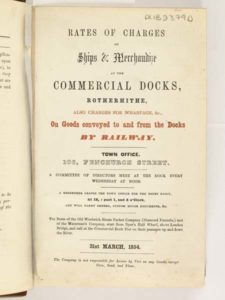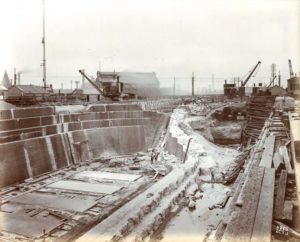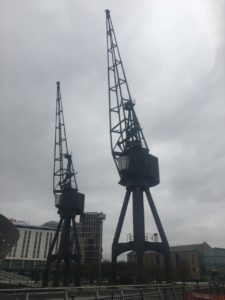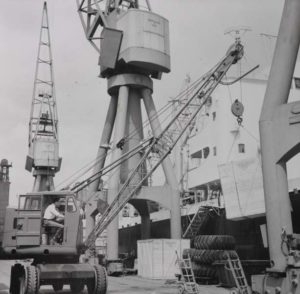The Royal Docks has resided in London’s East end for a long time and certainly longer than anyone can remember. In the present day the docks are used as a hub for sports clubs with the 4000 meter stretch of non-tidal water being used as the perfect place for rowing clubs to make their base at the docks to train and race; and why wouldn’t they?
With a total of seven rowing clubs, three dragon boating clubs, one sea cadet group and a flurry of visiting clubs it’s no wonder that the docks are used for this purpose. Though it wasn’t always this way.

Early 1800’s
The docks can trace it’s origins back to the Early 18oo’s when new, bigger ships carrying larger amounts of import were beginning to strain the small and difficult to access Port of London; creating the demand for a newer, bigger and more efficient port to be constructed. Once the need was established the question of the hour was finding a place that would be capable of withstanding a payload this big.
At the time East London was a series of marshlands but having close proximity to the Thames made it the perfect candidate to begin work on the new docks.
1855
By 1855 work was completed on the Royal Victoria docks being carved in London’s East End spanning 2000 meters long and 13 meters deep making it the perfect place for larger ships to dock without getting involved with the flotilla of commercial vessels in central London.
Now open to the wider world, the new docks was a pinnacle of engineering and allowed import to be brought into Britain at a record pace. Bringing both work and prosperity to the area of East London that was before reserved for those who could afford to live and work in central.
By 1880 the docks were the leader of imported trade in the UK and was struggling to keep up with their own success. This was the point when the idea was proposed that a second dock would be built to allow more ships to dock when needed.

1921
1921 bore witness to the development and opening of the second docks, this docks is now home to the University of East London and London City airport, the second dock was titled King George V and the dock was opened and put to work in 1921 uniting the two docks under the name “The Royal Docks”.
A mere 5 years later the Royal Docks was under fire from the workers when on the 3rd May 1926 at midnight the workers held a general strike under the guise of poor working and living conditions.
Despite the strike only lasting 9 days, the docks were still hit hard as all import and trade to the docks came to an abrupt halt. Although the dispute was resolved there were still conflicts between workers and bosses regarding pay and conditions.
World War 2
As the docks were flourishing into its hay day world war two was declared and the docks held their own in order to keep the supply lines open. The docks were still receiving imports. The Luftwaffe saw the docks as a threat and chose to bomb them especially during the Blitz that saw the docks come under heavy fire but never damaged enough to not carry out its duty to the war effort.


Post War
The post-war period hit the country hard with ration not formally ended until 1954 when the restriction of purchasing meat products was lifted.
Following the post-war period shipping commercially began to rise once again but come 1980 many of the ships were unable or unwilling to travel all the way up the Thames in order to dock and unload their goods.
Many ships choosing the ports of Southampton, Liverpool or Tilbury as a quicker solution. This shift combined with the docks inability to handle the increasingly large cargo meant that on December 7th 1981 the docks saw their last cargo ship leave after being loaded before the docks were closed down and all commercial vessels took their business elsewhere.
Present Day
Moving into present-day where the docks serve as a passing view, a nice walk or simply a body of water. However, King George V Dock has now been turned into a 2k stretch of water that rowers are all too familiar with.
One that is graced with the appearances of many water users and a few international crews such as the Argentinian double who went on to compete in the Rowing World Cup.
Photo Credit is awarded to the Museum of London and Docklands museum collections. https://collections.museumoflondon.org.uk/online/object/845474.html (1964 Crane Image)
https://collections.museumoflondon.org.uk/online/object/743574.html (1913 Dock Building image)
https://collections.museumoflondon.org.uk/online/object/746760.html (1894 rates)



